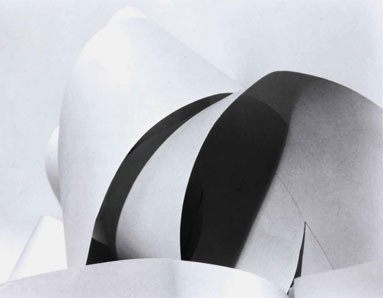Manuel Alvarez Bravo
dal 12/2/2013 al 18/5/2013
Segnalato da
12/2/2013
Manuel Alvarez Bravo
Fundacion Mapfre, Madrid
The show is organised around 8 themes, and features 152 photographs that attest to the tenacity and coherence of Bravo's creative development. These are accompanied by 5 experimental films which offer examples of his work in this genre and illustrate his relationship with cinematography over more than 50 years.

Curators: Laura González Flores and Gerardo Mosquera
Objects as signs, words as images, reflections as things: resembling nothing so much as graphic poems, the photographs taken over eight decades by Manuel Álvarez Bravo (Mexico City, 1902-2002) have established him as one of the founding fathers of modern photography.
Beyond their associations with the folk culture of an exotic land, the political rhetoric of muralism and Surrealist aesthetics, Álvarez Bravo’s fascinating and complex photographs are a reflection of the sweeping changes ushered in by the Mexican Revolution of 1910: the progressive abandonment of rural life and traditional customs, the rise of a post-revolutionary culture with international influences, and the espousal of a modern culture that revolved around the whirlwind of the big city.
Rooted in Mexican folk sensibility yet with a modern outlook, the work of Álvarez Bravo is an individual, autonomous and internally coherent discourse. Drawing inspiration from painting, works on paper, literature, music and, above all, film—the quintessential art form of his era—Álvarez Bravo’s oeuvre can be interpreted as the quest for photography as art: an interrogatory mission that explores the relationships between image and language, bodies and things.
Álvarez Bravo’s imagery, at once disconcerting and poetic, is a Mexican contribution to the language of modern photography. His work proves that modern art, far from being a single centralised praxis, is a multiple construction arising from a wide variety of standpoints, poetics and cultural contexts.
Álvarez Bravo destroyed his early works, pictures images influenced by the pictorialist photography of Hugo Brehme and contemporary postcards. Inspired by the "strange" photography that Edward Weston and Tina Modotti were practising in Mexico, he devoted himself to the search for a "pure" photography in which forms tended towards abstraction. Heavily influenced by Picasso’s aesthetics, the synthetic, formal photographs that Álvarez Bravo produced prior to 1931 were more radically abstract than those of Weston and Modotti and therefore closer to the Constructivists. Prominent works from this period include Colchón (Mattress, 1927) and his Juegos de papel series (Paper Games, c. 1928), in which he photographed abstract images created by folding rolls of paper.
The show is organised around eight themes, and features 152 photographs that attest to the tenacity and coherence of Álvarez Bravo's creative development. These are accompanied by five experimental films (in 8mm and Super 8), never previously screened in public, which offer examples of his work in this genre and illustrate his relationship with cinematography over more than 50 years. Finally, the exhibition also includes documents such as his notebooks, work sheets and correspondence with prominent figures such as Henri Cartier-Bresson, Alfred Stieglitz and Edward Steichen.
Exhibition organised by FUNDACIÓN MAPFRE Instituto de Cultura, Madrid, and the Jeu de Paume, Paris, in association with Fundación Televisa, México
Image: Paper Waves, c. 1928. Gelatin silver print, printed later. Colette Urbajtel Collection / Archivo Manuel Álvarez Bravo, S.C.
Press contact:
Alejandra Fernandez t +34 91 5818464 alejandra@mapfre.com
Opening: 1st february, 8pm
Fundacion Mapfre
Paseo de Recoletos 23 - Madrid - 28004
Monday 14.00 a 20.00
Tuesday - Saturday 10.00 a 20.00
Sunday 11.00 a 19.00.
Free entrance



